Doodhpak:-
Doodh Pak is a Gujarati rice pudding made from white rice, milk, nuts and flavours. Use my simple, traditional recipe to make it.
About DoodhPak:-
Doodh Pak (Dudhpak) is a Gujarati-style rice pudding consisting of white rice cooked in milk and seasoned with saffron, nutmeg and cardamom. Dry fruits are added to give it a nice crunch.
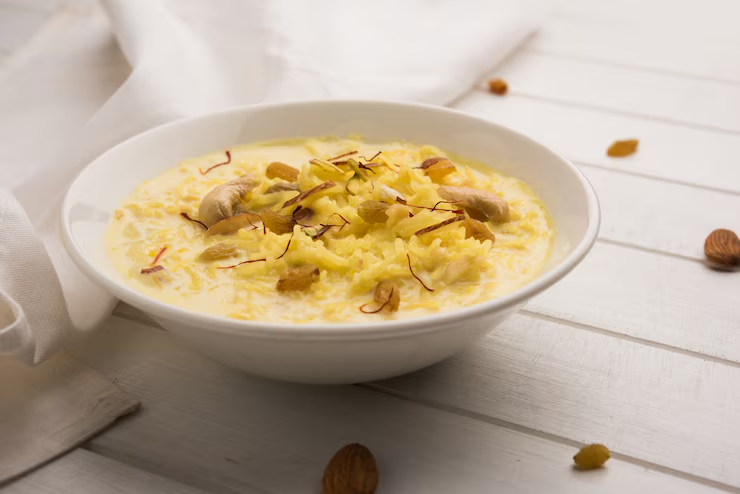
Material:-
White Rice – I used short grain Surti Kolam rice to make this recipe. You can use any delicious short grain white rice.
Milk – Use whole milk (full fat milk) for best results.
Taste – Make this dish delicious with saffron, nutmeg powder and cardamom powder.
Nuts – I used almonds, cashews, pistachios and chironji. You can use any dry fruits of your choice.
Others – You will also need granulated white sugar and ghee.
The most effective method of making Doodhpak:-
Wash 3 tablespoons short grain white rice and soak it in water. Keep it aside.
Heat 1 liter milk in a non-stick pan on medium-high heat.
When the milk reaches boiling point, reduce the intensity to medium-low.
Channel the rice and put it in a container. Add 10-15 threads of saffron in it and mix well.
Cook for 40 minutes until the doodhpak thickens and the rice is cooked. Mix as often as possible while cooking. Scrape down the sides of the container on a standard span and pour the set milk back into the pan.
Add the following ingredients and mix well.
6 tablespoons granulated white sugar
1 tbsp ghee
¼ cup chopped dry fruits (I used almonds, cashews, pistachios)
1 tablespoon chiroji
½ tsp cardamom powder
½ tsp nutmeg powder
Cook for another 3-4 minutes. Remove the container from the heat.
Keep in the fridge for 2-3 hours and serve chilled.
Gujarati Dal:-
Sweet, spicy and tangy, Gujarati dal is a comfort food in its ideal form. Use my simple recipe to make it.
About gujarati dal:-
Gujarati dal is completely different from the dal recipe of UP and Bihar. It is sweet, spicy and hot at the same time. Although it is also made using toor dal, its taste is completely different from the North Indian toor dal. It is much thinner than the North Indian form. Every Gujarati household has an alternative way of making this dal, yet the final taste is the same for the most part. Serve it with rice or roti and dry vegetables in your regular diet. Indian style dinner.
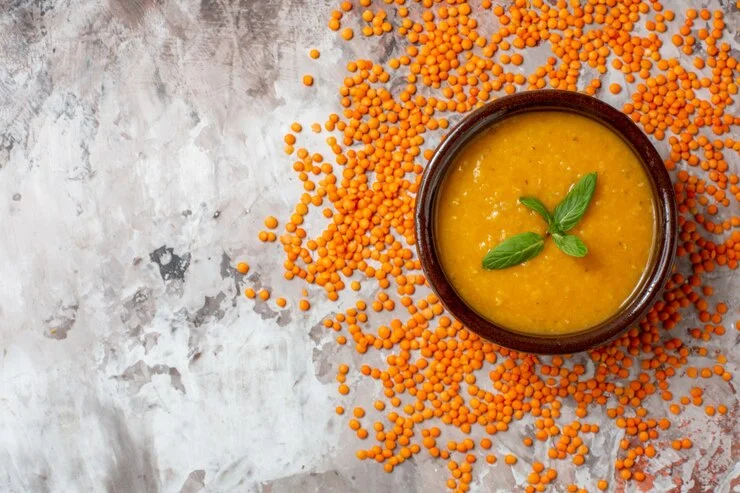
Material:-
to cook lentils
You will need toor dal, raw peanuts, tomatoes, dried kokum, green chillies, turmeric powder, salt and ginger.
I used Indian green chillies, but you can use any available variety. You can also change the chillies as per your preference.
to add to prepared dal
You will need coriander powder, red bean stew powder, jaggery, lemon juice and cilantro.
Use natural pale colored jaggery as synthetic compounds are added to light colored jaggery to lighten its colour.
for treatment
Add ghee, asafoetida, fenugreek seeds, earthy mustard, cumin, dry red chilli, cloves, cinnamon and curry leaves to the dal and temper it.
Method to make Gujarati style dal:-
cook lentils
Wash 1 cup toor dal and soak it in water for 30 minutes.
Drain the water and add the dal to another vessel along with the following ingredients.
2 tbsp raw peanuts
½ cup chopped tomatoes
2-3 dried kokums
1 teaspoon chopped green chilli
½ tsp turmeric powder
1 teaspoon salt
1 teaspoon ground ginger
Add 3 cups water and mix until thick. Close the lid of the Moment Pot.
Set the valve to the fixing position.
Press Tension Cook and clock for 10 minutes on high pressure.
When the clock stops, allow the tension to dissipate normally for 10 minutes.
Move the valve to the venting and relieve excess stress. Open the top.
Beat the cooked dal well with the help of a wire whisk.
Mix pulses to taste
Add more water to change the consistency of the dal. Gujarati style dal should be thin like milk.
Add ½ teaspoon coriander powder, ½ teaspoon red stew powder, 1 teaspoon powdered jaggery and squeeze 2 teaspoons lemon and mix well. Heat the dal till it boils.
temper the lentils
Heat 2 tablespoons ghee in a small container over medium-high intensity.
When the ghee becomes hot, add the ingredients given below and let it cook for 5-6 seconds.
¼ teaspoon asafoetida
¼ teaspoon fenugreek seeds
½ teaspoon clay-colored mustard seeds
½ tsp cumin
Add 2-3 dry red stew, 2-3 cloves, 1 inch cinnamon stick and 10-12 curry leaves and sauté for 3-4 seconds.
Pour this treatment over cooked dal and mix well.
Garnish with chopped coriander and serve hot.
Kathiawadi Tadka Buttermilk:-
Kathiawadi Tadka Chhach (Tempered Buttermilk) is traditional flavored buttermilk with the addition of ghee. This refreshing refreshment is ideal to serve on hot summer days.
About Kathiawadi Buttermilk:-
Kathiawadi Tadka Chaas is a refreshing Indian dish prepared with plain curd and then cooked with a tempering of ghee. It is very famous in Kathiawadi households (Kathiawad is a district in Gujarat) and in many cases it is served at nearby Indian-style dinners. In the hot days of late spring.
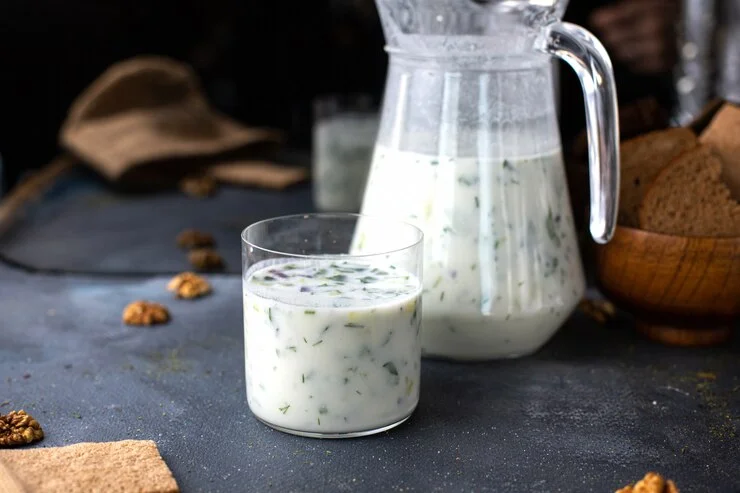
Material:-
Dahi (curd, curd) – Use plain curd to make tadka buttermilk.
Others – You will also need cilantro (fresh coriander leaves), boiled cumin powder, black salt (black salt), plain salt, dry ginger powder (saunth), black pepper powder and water.
for treatment
To make this delicious buttermilk treat, you will need ghee, cumin powder, green chillies and curry leaves.
Change the green chillies as per your choice.
Instructions to make Kathiawadi tadka buttermilk:-
Add 1 cup cold plain yogurt to a medium mixing bowl.
Beat on wire speed until smooth and velvety.
Add the following ingredients to the bowl and mix well.
1 tablespoon finely chopped coriander
½ tsp boiled cumin powder
½ teaspoon black salt
½ teaspoon conventional salt
½ tsp dry ginger powder
½ tsp black pepper powder
3 cups cold water
treat
Heat 1 tablespoon ghee in a small pan on medium heat.
When the ghee becomes hot, add the accompanying ingredients and let them cook for 4-5 seconds.
½ tsp cumin powder (or cumin)
1 teaspoon chopped green chilli
10-12 curry leaves
Pour the treat over the buttermilk and mix well. Serve chilled over ice.
Gujarati Dal Dhokli:-
Dal Dhokli is a Gujarati pasta like dish which is very tasty, delicious and nutritious. This dish is exceptionally famous in and around many parts of India. The whole wheat mixture is rolled and cut and cooked into khatti meethi dal (sweet and sour dal). This dish has three parts. Making flour batter and rolling dhokli, making dal, mixing both and making dal dhokli.
About Dal Dhokli:-
Dal Dhokli is an Indian dumpling soup that is good, tasty and extremely nutritious. Generally dal dhokli is made with a mixture of extra dal and extra chapati. The extra dal from the previous day is added along with a heap of new coriander leaves and the mixture is flattened using a rolling pin and added to the boiling dal to make dal dhokli. The batter for dhokli is made with wheat flour and gram flour to add flavor and taste. Celery. The mixture is rolled and cut into precious stones using a blade or pizza shaper. Dal for Dal Dhokli is prepared Toor Dal with full flavour. Instead of toor dal you can use any dal like masoor dal or a mixture of pulses known as panchmela dal. It is important to make the dal fine and tasty for the taste of dal dhokli. Look at my Gujarati dal. Before adding the dhokli, ensure that the dal is boiled completely so that the pasta does not clump or stick to each other. Also, the dal should be very watery before adding dhokli. When dhokli is added and heated, the dal will become thick. Similarly, to add new taste to it, do not add coriander leaves and lemon juice at the end.
Dal Dhokli is made for those who are recovering from fever as it is mild, which provides relief to the stomach.
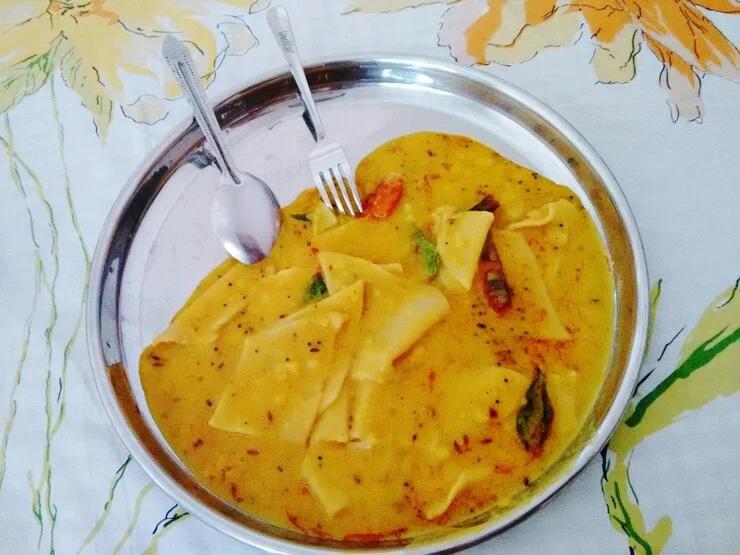
Material:-
These are the ingredients to make Dhokli Batter (Whole Wheat Mixture)
Wheat Flour – The use of whole wheat flour and especially chakki atta makes this dish so tasty and healthy.
Gram flour – I like to use some gram flour which is also known as gram flour or gram flour to make the mixture. This gives the pasta a slightly nutty flavor.
Zest Powder – I added some bean stew powder, turmeric powder and asafoetida to the batter to flavor the mixture.
Celery – Helps in absorption and gastric problems. It also helps in making the mixture tasty.
Oil or Ghee – A limited amount of oil or ghee is added while massaging the mixture to make it more chewable.
These are the ingredients to make Dal Dhokli (Sour Meetha Dal)
Toor Dal – Toor dal prepared for Dal Dhokli is packed with full flavours. Instead of toor dal you can use any dal like masoor dal or panchmela dal. It is important to make the dal delicious and tasty for the taste of dal dhokli.
Tamarind – The end of tamarind along with lemon juice gives a spicy (sour) taste to the dal.
Jaggery – Like all Gujarati dishes you will want to use jaggery or sugar to really make your dal better.
Flavor Powder – Original flavors like bean stew powder and turmeric powder include dal.
Whole Flavors – Whole Flavors treated in oil or ghee is one of the major spices for dal. I use mustard, cumin, fenugreek, narrow leaves, cinnamon and curry leaves. To enhance the taste, asafoetida is mixed with a little ground ginger.
Coriander leaves and lemon – Add lots of coriander and lemon juice to this dish to lighten it up and give it more flavor.
Instructions to make Dal Dhokli:-
Wash the lentils.
Add it to a strainer cooker along with turmeric powder, red stew powder, salt, tomatoes and 4 cups of water.
Pressure cook till the dal becomes soft. – Add jaggery, 2 cups of water and lemon juice to the dal and mix well.
Add whole wheat flour, gram flour, salt, vegetable oil, celery and turmeric powder in a bowl and mix well.
Now add some water and prepare a soft chapatti-like batter.
Make small balls from the mixture and roll them to make delicious chapatti.
Cut the chapatti into small pieces of any ideal size.
Add the pieces to the cooked dal. If the dal is too thick then add some more water. Cook on medium flame for 10-12 minutes until the batter is cooked properly.
Heat ghee in a vessel. – When the ghee is hot, add asafoetida, cumin and mustard seeds and let it cook for some time. Add curry leaves and green bean stew to it and fry for some time. Pour the treat over the lentils and give it a delicate mix.
Thepla:-
About Thepla:-
Thepla is a Gujarati-style paratha or flatbread prepared using whole wheat flour and sometimes mixed with other flours such as gram flour, millet and jowar.
Traditionally, fenugreek is added to the thepla to enhance the taste, texture and nutrition level, but you can experiment with it and also add other vegetables like bottle gourd, carrot, beetroot etc.
These theplas are an everyday item in Gujarati households and you will always find them kept in the fridge in large quantities. So that whenever you feel hungry, heat them on the pan and enjoy with a cup of masala tea.
These theplas stay good for a few days and are an ideal option to carry along while travelling.
These are also a great lunch box option as your child can roll them up and eat them without any hassle. This Indian flatbread is considered very nutritious and good for digestion.
Great to have with ginger tea or any favorite beverage, believe me Methi Thepla tastes best when eaten with something hot!
This is Methi Thepla,
-Delicious
-Healthy
-Travel friendly
-A great option for lunch box
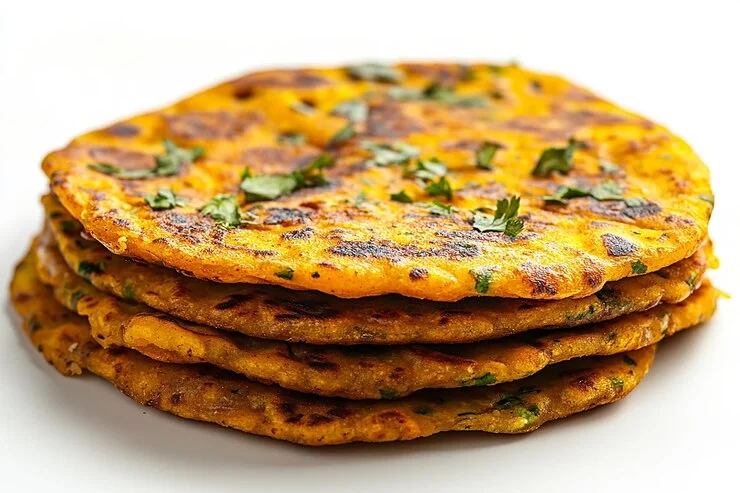
Material:-
Flour – To make these theplas, I have used whole wheat flour and gram flour/besan. Gram flour adds a pleasant solid surface to the thepla when eaten fresh.
However, if you want to make it for your own use or store something similar, then, at that time, you can try not adding gram flour and set these with whole wheat flour only.
Fenugreek leaves – Young fenugreek leaves are washed, stalks removed, and then finely chopped to incorporate into the flour mixture. Fenugreek leaves add an extraordinary flavour, texture and nutrition to these thepals.
If fenugreek leaves are not available, you can add kasoori methi, also known as dried fenugreek leaves. It also adds a wonderful flavor to these Gujarati style light parathas. Use 3 tablespoons kasoori methi for every 2 cups flour.
Curd – Curd makes these theplas delicate. You can also add buttermilk instead of curd. However, if you want to store it for a long time, try not to add curd or buttermilk to it and dissolve the batter using water.
Taste – To upgrade the taste of these theplas, we will include some regular zest powder, for example, turmeric powder, red bean stew powder and salt.
Cumin and celery seeds – These seeds add surface and flavor as well as medicinal benefits as they are considered perfect for processing.
Green chillies – To add spicy flavor and make them quite tasty, green bean stew gum is added to the thepla mixture. If you don’t like hot food then you can omit it or increase the quantity of green chillies provided it is more spicy.
Others – Apart from these, you will also need ginger gum and asafoetida.
Instructions for making Thepla:-
Add ground bottle gourd and salt in a bowl, mix and keep aside for 10 minutes. The gourd will deliver water in almost no time.
Add flour, cumin, asafoetida, turmeric powder, red stew powder, green stew and ginger in a bowl and mix well with your fingers.
Add curd and mix once again.
Now mix the bottle gourd with the water given by it and make a soft and smooth batter. Use at least normal water whenever required.
Add 3 tablespoons oil to the batter and massage again for a while.
Cover the mixture and keep it aside for 15 minutes.
Divide the batter into 8-10 equal parts. Make each piece into a ball.
Using dry flour, fold the dough into a 6-inch circle.
Heat an iron over a burner. Place the thepla on hot iron and cook until clay colored spots appear on both the sides.
Apply 1 teaspoon oil on both the sides and cook till the spots disappear and the thepla is cooked.
While cooking, keep pressing the thepla evenly with a spoon.
Khandvi:-
Khandvi, a famous Gujarati dish is also served for breakfast in Gujarati families. It is made from chickpea flour, which is later tempered with green bean stew. This is the way to make it.
About khandvi:-
If you are a foodie like me, then I am sure you must have eaten this famous Gujarati Farsan or Khandvi. Khandvi is a Gujarati dish made from gram flour and can be eaten easily. Every Gujarati Cafe. You will find many street vendors selling it in Gujarati also. Due to its impeccable taste and simple recipe, this dish is slowly and steadily becoming popular all over India. For breakfast, but it is also served in Gujarati breakfast and is made regularly in almost all Gujarati households. Chickpeas are cooked to the right consistency with various ingredients and then taken to form mouth-watering and delicious Khandvi Rolls. After the gram flour gets a slight raw taste, it is tempered, which further enhances the similar taste. The seasoning adds an incredible flavor and the green chilies add a little kick to this delicate bite.
This is Gujarati Khandvi,
Delicious
very delicate and delicate
without gluten
It is wonderful to serve with masala tea
Ideal for your weekend breakfast
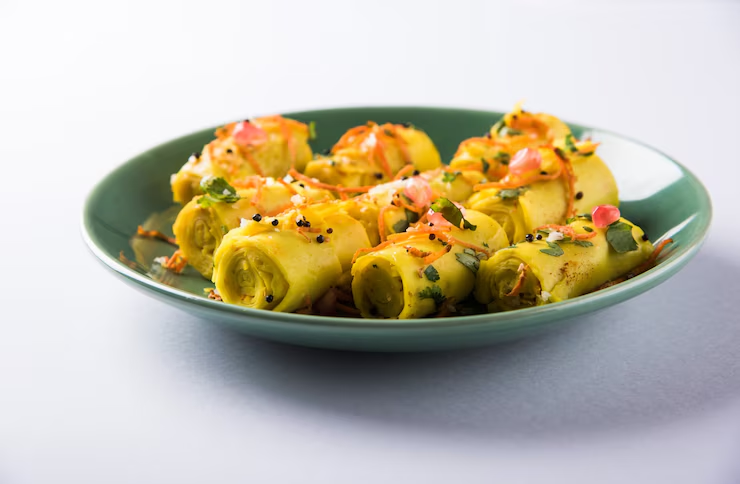
Material:-
For Khandvi – To make delicate and delicate Khandvi Rolls, you will need gram flour or gram flour, buttermilk, salt, turmeric powder, ginger, green bean stew gum and lemon.
Green Bean Stew Gum and lemon add the ideal measure of spiciness and spiciness to these delicate rolls and turmeric powder adds a delightful yellow color.For the treat – Khandvi rolls are coated with a delicious tadka consisting of mustard seeds, sesame seeds, asafoetida, curry leaves and green chillies.
For decoration – When you apply tadka, garnish these khandvi rolls with some ground coconut and coriander leaves.
Instructions to make Khandvi:-
Mix gram flour, buttermilk, salt, turmeric powder, ginger, green gum and lemon in a bowl.
Take care that there are no bulges. If there are some lumps, strain the mixture through a strainer.
Heat the mixture on medium intensity until it thickens to the right consistency. (This will require approximately 30-35 minutes.
To check whether the mixture is finished or not, put a drop of it on a plate and spread it a little and let it cool. Now try to move it. In the event that it rolls, the mixture has reached the right consistency. In any case keep cooking it a little more)
Keep mixing continuously, otherwise the mixture will run out of the base.
Apply oil generously on a smooth work surface. (I used my kitchen counter. You can also grease the back of a steel plate or baking plate.) Pour the mixture onto the greased stage. Immediately spread the mixture into an even layer using a spatula or spoon. Let it cool for a few moments.
Cut into thin strips. (If you have OCD like me, use a ruler to get even sized stripes)
Roll the stripes.
For tempering, heat oil in a container. When the oil is hot, add mustard seeds to it. When the seeds start crackling, add sesame seeds, asafoetida, curry leaves and green chillies.
Pour tadka over khandvi. Decorate with new coriander and ground coconut.
Khakhra:-
Fresh and decadent, Methi Khakhra is a famous dish made in Gujarati and Rajasthani families. Make it and you’ll clearly become addicted to this bite. This is the way to make it.
About khakhra:-
Fresh and decadent, Methi Khakhra is a famous dish made in Gujarati and Rajasthani families. Make it and you’ll clearly become addicted to this bite. This is the way to make it.
About this recipe Khakhra is a delicious whole wheat wafer that is famous in Gujarat and Rajasthan and is commonly eaten as a snack. You will find hand-made khakhras in every family, served with your night tea or espresso. These are made exactly like bread and cooked at low intensity on a frying pan until they are completely fresh. Be done. These whole wheat khakhra are cooked with kasoori methi which adds a beautiful flavor to these plain khakhra.
Nowadays, there are many varieties of Khakhra available in the market, but home made Khakhra has a different taste and novelty together.
So, whenever I have some extra energy, I install and store it at home in huge quantities.
After making it on the pan, let them cool so that they become completely fresh. When they have completely cooled, you can store them in a waterproof holder at room temperature.
These whole wheat masala methi khakhra is an extraordinary meal to have in between dinner or whenever the craving strikes. You can also pack these in your and your child’s lunch box or dinner box in between dinners.
Kurkure
low in calories
An extraordinary nibble to gnaw
easy to make at home
better than those obtained locally
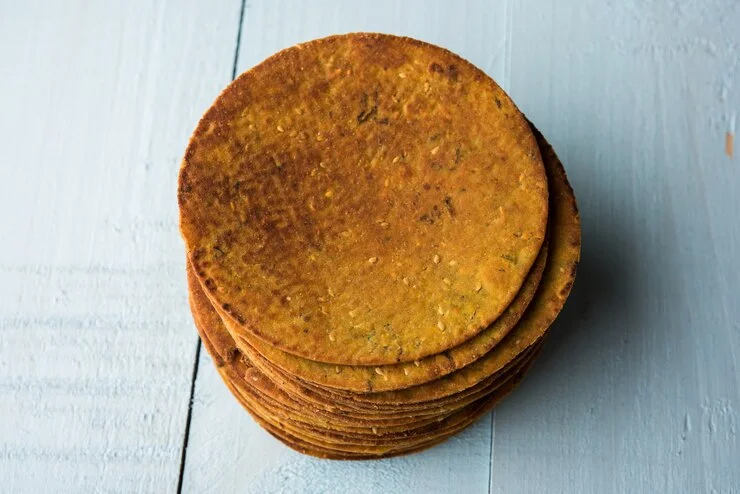
Material:-
Whole wheat flour – These khakhras are exceptionally tasty, as they are made from whole wheat flour. You can also mix different types of flour with whole wheat to improve its shape and form.
Kasoori Methi – Kasoori Methi is another name for dried fenugreek leaves and its type changes the taste of this somewhat simple thing.
You can try not adding it, still it makes khakhra more delicious.
Oil – You can include any vegetable oil of your choice for these Khakhras.
Various Ingredients – Apart from the ingredients mentioned earlier, we will need salt, asafoetida, red stew powder and turmeric powder. The red stew powder adds a little heat to the khakhra, while the turmeric powder adds a nice yellow color.
How much red stew powder you can substitute depends on how hot your khakhra is.
Instructions to make Khakhra:-
In a bowl, add flour, kasoori methi, salt, red bean stew powder, turmeric powder, asafoetida and 2 tablespoons oil and mix with fingers.
Add water slowly.
Massage to make a medium delicate paste. Cover and keep aside for 20 minutes.
Divide the mixture into 20-22 equal balls.
Sprinkle dry flour on the balls and roll into small 5-inch circles. Make the balls as thin as possible without tearing the batter.
Heat an iron. Place the khakhra on the iron. Reduce the intensity.
Press it with a cotton cloth and cook until clay colored spots start appearing. Flip to the opposite side and continue pressing with some material. Apply ½ teaspoon oil on both sides and cook until the khakhra becomes fresh. Keep turning while cooking.
Remove from iron. Let it cool completely. Keep it in a tightly sealed container for up to a month.
Dabeli:-
Kachhi Dabeli is a famous Indian road food from Gujarat province and is basically a loaf stuffed with spicy and spicy potato filling and chutney. This is the way to make it at home.
About Dabeli:-
Dabeli, the real meaning of the word is “to squeeze”. Due to its starting point in the Kutch region of Gujarat, it is also called Kachhi or Kachchi Dabeli.
It is basically a pav (gokhru) filled with spicy, savory potato mixture and finished with the very tasty dabeli masala, pomegranate seeds, sev and hot and sweet chutney.
The spicy and flavorful potato filling complements the pillowy delicate pav and chutney so much that you will become addicted to this Gujarati dish. In Gujarat, but you can also find this delicious dabeli in Mumbai city. Moreover, due to its spicy spicy taste and simple chakri, it has become popular all over India. Aloo masala may vary from person to person, although the ingredients are practically somewhat similar. Plus, take my word for it, it tastes delicious no matter where you eat it.
I love this Gujarati pav dish and make it often at home whenever we want to eat something spicy, sweet and flavourful. You will just need simple ingredients to make this, so check it out. Serve this Kachhi Dabeli with hot masala tea or South Indian Channel Espresso for your break time.
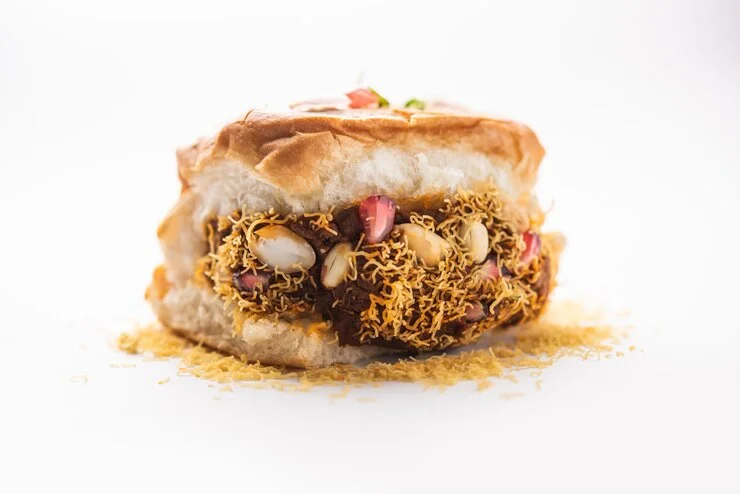
Material:-
Pav – Whenever I get the opportunity and energy, I make pav at home, because they are fresh and really delicate. Still, sometimes, I actually take pav from a nearby pastry shop to make dabeli.
While buying pav, make sure that it is new. In case of making it at home, you can also make whole wheat pav for another option.
For Aloo Masala – This aloo stuffing is full of flavour! It is spicy, spicy and sweet. To make aloo masala, you will need margarine, onion, red stew powder, turmeric powder, dabeli masala, water, mashed potatoes, tamarind chutney and salt.
Once the masala is cooked, it is finished with coconut, pomegranate and finely chopped new coriander.
Dabeli masala is the main ingredient, which gives an alternative taste to this potato stuffing and makes it interesting. You can either make something similar at home using my recipe or use a locally purchased recipe.
The coconut adds a pleasant surface, as well as the pomegranate, adding a somewhat sweet tang to this spicy aloo masala.
For peanuts – To make masala peanuts, peanuts are mixed with vegetable oil, salt and red bean stew powder and later mixed with potatoes in the middle of the pav. To make this chutney, you will need garlic, red bean stew powder, salt. And lemon juice.
To assemble – Now to assemble, apart from the above ingredients you will need finely chopped onions, tamarind chutney, sev, pomegranate and spread.
Sev is an undeniable necessity for street style contact, including a pleasant crispness on the outside. Finally, heat the loaf in margarine until the top and base of the loaf are slightly moist.
Method of making Dabeli:-
For the garlic chutney, add all the ingredients to the container of a blender and blend until smooth. Add some water while crushing.
For masala peanuts, mix all the ingredients in a bowl and keep aside.
To make the filling, heat spread in a dish.
Add onion and fry until soft.
Add red bean stew powder, turmeric powder and dabeli masala and fry for a while.
Now add ¼ cup water and cook the masala for 2-3 minutes.
Add mashed potatoes, tamarind chutney and salt and mix well. Cook for a while.
Take out the stuffing in a plate. Add desiccated coconut, pomegranate seeds and new coriander on top.
Make cuts on the edges of the loaf. Mix with garlic chutney and tamarind chutney.
Fill some potato filling in the pav. Add some masala peanuts on top.
Top with onions and more pomegranate seeds.
Press the stuffed pav on the edges with nylon sev.
Heat a frying pan and put margarine on it.
Cook the stuffed pav on low flame from both the sides till slightly cooked. Garnish with new coriander and pomegranate seeds. serve hot.




